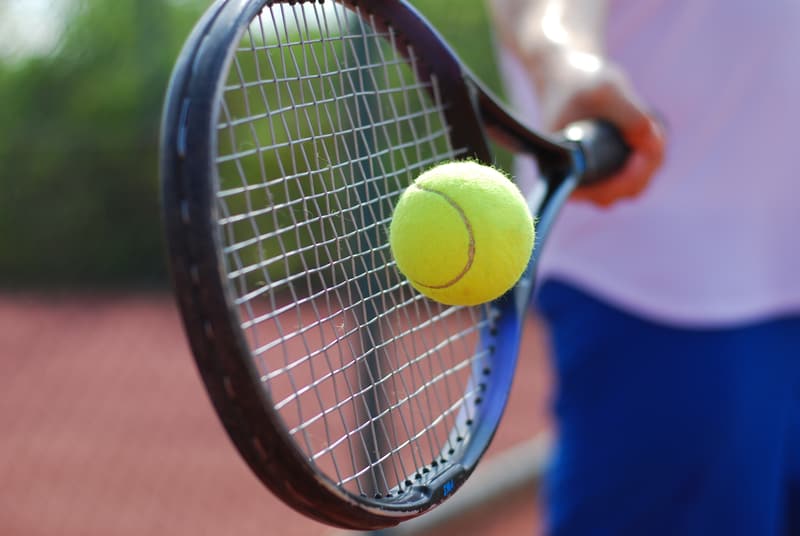In the past few years, tennis has become a subject that many people love and participate in. Therefore, before playing this sport, it is required that you equip yourself with the basic knowledge of how to use a tennis racket for beginners as well as how to play tennis. The following article from Tennisqa.com will help you understand how to use a tennis racket for beginners.
I. How to grip a tennis racket
The first step to winning at tennis is mastering the proper racket grip for each shot. You can hold your racket in a variety of ways depending on the shot you want to make, so it’s critical to know which strokes can be made with each grip.
The 4 Tennis Grips Explained
1. Continental Grip
The Continental grip is a traditional grip that was once employed for nearly all shots in the game. It is still used frequently and is a crucial component of the fundamentals of tennis.
Put your thumb on the flattest, thickest bevel of the racket handle with your dominant hand to employ the Continental grip. There are a total of six bevels on a grip; a bevel is a flat portion of the grip. The side of the grip is formed by your thumb and index finger in the shape of a V.

In the modern game, the Continental grip is mostly employed for serves, volleys, slice strokes, one-handed backhands, and overheads. Since everything other is an extension of the Continental grip, it is likely that you will learn this one first when you are a novice. It is quite simple to get the ball over the net with this grip since it opens up the racket strings, making it an excellent grip to employ when learning to make contact with the ball.
Additionally, the Continental offers the most stability on conventional punch volleys and enables excellent slices when the player starts high with the racket head and cuts underneath it. This grip makes serving more difficult, but it is the best one to use as you learn and advance.
2. Eastern Grip
By shifting your hand one bevel to the right of the Continental grip, you can reach the Eastern grip, which is the first grip extension of the Continental grip. Since most people take up their rackets with this grip by default, the Eastern grip is the most natural and among the simplest to use. The most traditional method of teaching the Eastern grip is “shaking hands with the racket.” Put your hand around the bottom of the handle in a natural, relaxed manner, as if you were shaking hands with the racket. Placing your palm flat against the strings and sliding it down the racket to the lowest point of the handle is another simple technique to locate this grip.
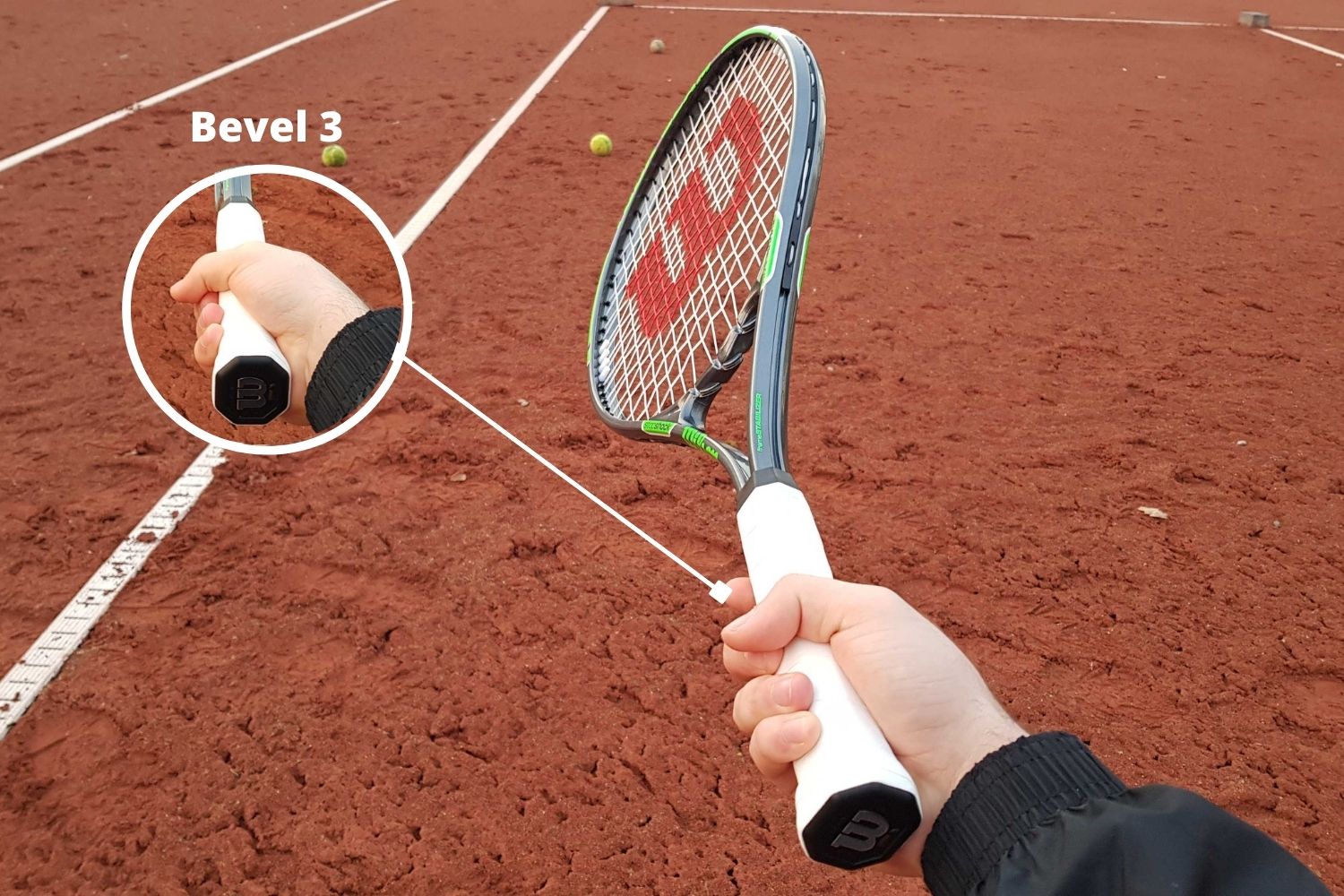
Being only one point away from the Continental makes the Eastern a very simple grip to utilize, making it simpler to switch grips from your neutral position (Continental). We have changed positions from the Continental into one that will naturally close the racket face, allowing you to swing a little quicker and keep the ball on the court more frequently. You will need to aim higher over the net because of the closed racket face to make sure you clear it, but as long as you do, it will naturally be simpler to keep your shot from going long.
The racket face is naturally forming a slightly downward angle, which will assist you in preventing the ball from sailing out. When you take a full, ground-stroke-like cut at high balls in the air with the Eastern grip, you can also produce some topspin on the ball. You’ll notice a significant difference in control as you transition from the Continental to the Eastern.
3. Semi-Western Grip
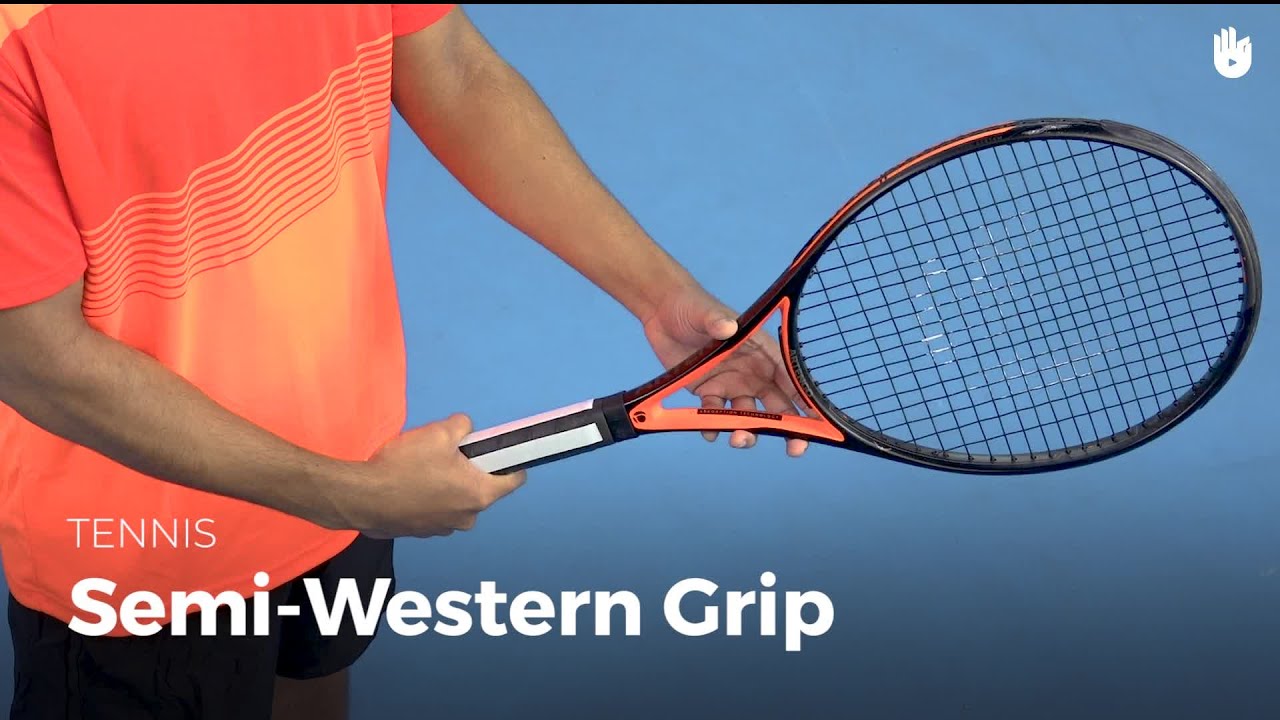
The most traditional forehand grip in the modern game for intermediate and advanced players is the Semi-Western grip. The Continental grip is two bevels to the right of this grip. It’s crucial to start with the racket head well below the ball or your waist when employing this grip, and to maintain your wrist free. This is essential for raising the ball over the net since the racket head is more constricted.
Since the Semi-Western forehand grip restricts the racket even further, it is possible that you will learn this grip as you advance and start swinging your racquet swiftly and precisely. The wrist may move more easily and freely with this grip, which will aid in creating topspin. The secret is to aim higher over the net since the racket head is more constricted and the grip produces more topspin than the Eastern. The Semi-Western is also excellent for swinging volleys when the ball clears the net high enough. Due to its excellent compromise between Continental and Full-Western, the majority of players opt to stop here when advancing the forehand grip.
4. Full-Western Grip

The most sophisticated and challenging grip is the Full-Western grip.
While the Full-Western creates a lot of margin on your shots and gives more consistency, it is difficult to learn. Furthermore, there are some disadvantages here. You give away some of the natural, easy power that comes with the less extreme grips, and with this grip, it is also much harder to change your grip since you are so far around the racket from the neutral, Continental position. You must use maximum wrist snap to get the ball to travel up over the net, and it can be difficult for the ball to go out due to the extremely closed angle of the racquet face.
The Full-Western is challenging to learn even though it allows you a lot more space on your shots and better consistency. There are also some drawbacks in this. With this grip, you lose some of the effortless, natural power that comes with the less severe grips, and changing your grip is considerably more difficult because you are so far from the neutral, Continental position. Due to the incredibly closed angle of the racquet face, it might be challenging to get the ball to go out. You must apply the utmost wrist snap to force the ball to travel up over the net.
II. How to swing a tennis racket
There is a lot that goes into a proper tennis swing, despite how straightforward it may look. Learn how to swing with accuracy each time by perfecting your forehand and backhand.
Forehand grips
- Eastern grip: Knuckle is on the third bevel. This is an accessible grip for beginners that enables the racket face to face forward and toward the net.
- Semi-Western grip: Knuckle is on the fourth bevel. Professional players frequently use this grip because it increases the spin on the ball.
- Western and Continental Grips: These are not advised for the forehand of beginning players because they are less common in contemporary tennis.
Two-handed backhand grip
- For a Continental grip, the right hand’s knuckle shifts to the second bevel.
- With your knuckle on the seventh bevel, the left hand clutches the handle above the right hand as if shaking hands with the racket. With your left hand, it will resemble an Eastern grip.
Ready position

Whether it’s a forehand, backhand, or volley, you should start and end each swing in this athletic position. It gives you a firm platform to move fast around the court in the interim while you wait for your opponent to hit the ball across the net. In this poised position for exercise, you ought to be:
- Stand wider than your shoulders while standing on the balls of your feet.
- bowed knees, prepared to spring
- With your elbows in front of your body, hold the racket out in front.
- Your left hand should support the racket at the throat while your grip is in the forehand position.
Forehand swing
1. Turn and get ready
Your weight shifts in the direction the ball is traveling from your ready stance, and your hips, torso, and arms all turn at the same time, carrying the racket with them. When you swing, your body will help produce force and provide power since this helps wind up your kinetic energy. Your non-dominant hand leaves the racket’s throat as you bring it back, but it remains in front to give balance.
2. Point of contact
The ball’s point of contact with the sweet spot on your strings is known as the contact skill point. The strings should be parallel to the net, and your arm should be comfortably bent in front of you. When you swing, your torso and shoulder must also turn toward the net; your arm does not provide all of the force.
3. Carry through
Following through to bring the racket over your opposite shoulder after you hit the ball is essential for swinging with power and securely recovering. From the point of contact, push the racket as far as you can in the direction of the net to create a straight shot, then finish by raising it up and over your shoulder. When you step forward at the conclusion to get back to the ready position, your left heel will be up.
Backhand swing
1. Grip switch
Your left hand will descend from the throat and into the handshake posture as you approach the ball. Hold the racket with this as you switch your right-hand grip to the second bevel.
2. Turn, prepare
Your entire body will turn to bring the racket back, altering your weight in the direction the ball is traveling, just like the forehand.
3. Point of contact
Step your right foot in sync with your left as you swing forward to give your swing strength and balance. To move the racket through the ball, use your left hand and torso.
4. Take action
Drive the ball toward the net with your racket as you continue to follow through over your opposite shoulder, ending on balance and moving into your ready stance.
III. How to hold tennis racket for serve
How to use a tennis racket for beginners is to generate the continental grip when using your serve grip technique. There are several approaches you can take.
Shake hands With Your Racquet
Holding the tennis racquet out in front of you and reaching out to shake hands with it is one of the simplest ways to learn how to form the continental grip.
Hold your tennis racquet out in front of you with the strings facing to the side and the edge of the frame perpendicular to the ground and pointing down toward the court. Your handshake should be performed with a grasp that is quite similar to holding a continental grip.
This simple technique is perfect for beginners since it gives them a quick reference to remember the grip.
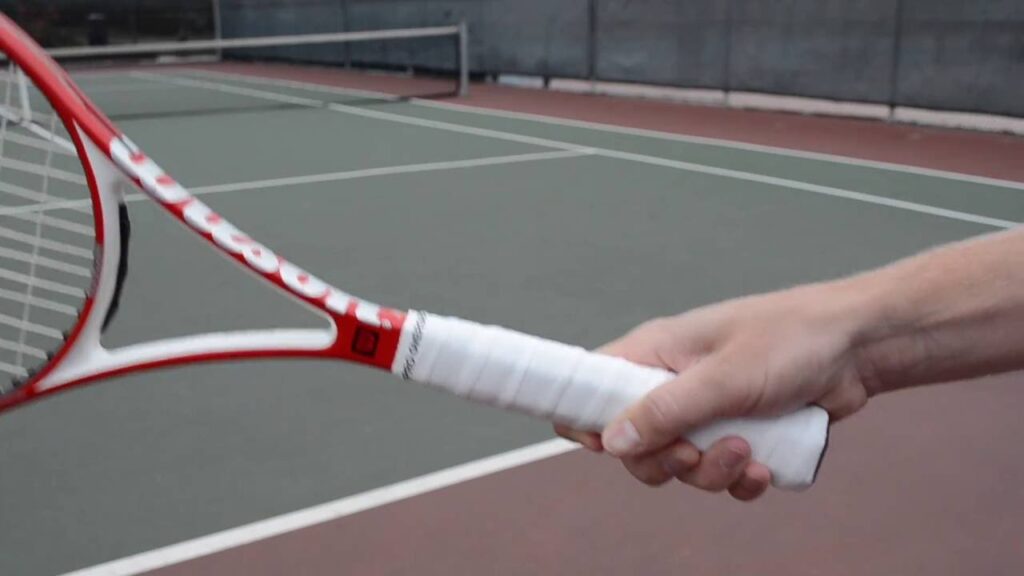
Hold your racquet firmly in your hand
Another common analogy is to grip your racquet like a hammer and envision hammering a nail with the side of the racquet.
This straightforward method should provide you a manner to hold your continental serve grip that is similar to shaking hands with your racquet.
Choose the Correct Bevel
Utilizing the handle’s bevels which you might not have even known were there will help you determine your tennis serve grip with the greatest accuracy.
Your tennis racquet’s handle is an octagon with eight sides or bevels, just like a stop sign, if you look at it closely.
We can identify the proper grip by numbering the bevels on your handle. We’ll name the very top bevel as 1, and then each succeeding bevel working clockwise all the way around to 8 with the racquet out in front of you and the side of the racquet frame pointing down toward the court.
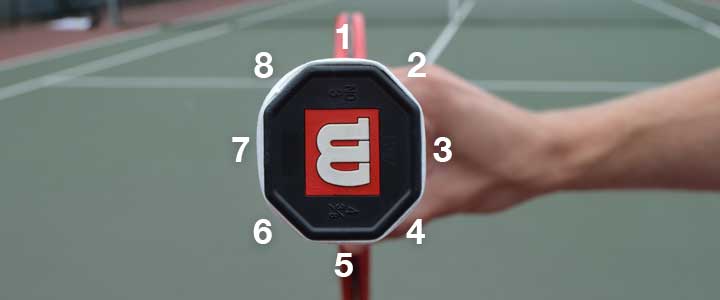
IV. How to hold a tennis racket forehand
The majority of serves, cuts, defensive hits, overheads, and volleys are performed in the continental manner.
You can do it as follow: Start by positioning the base of your index finger’s knuckles on the first edge of the grip, in the middle of the V-shape your right thumb and forefinger have created. For lefties, put the same knuckle on the fourth edge of the racquet handle.
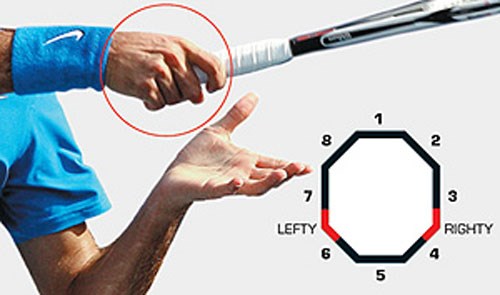
V. How to hold a tennis racket right-handed
Please do as ” How to hold tennis racket for serve” content and then: To grip the racquet with your right hand, open your hand and place the inside of your index finger’s knuckle against bevel 2.
VI. How to hold a tennis racket backhand

If you are using a Continental grip and want to switch to the Eastern Backhand position, turn your index finger counterclockwise (or clockwise for lefties) until the joint of your index finger is at the top of the racquet handle.
This backhand grip gives your wrist the same strength and stability during practice as the Eastern forehand grip. If the player is having trouble holding the Eastern style, they can switch to the Continental or Eastern Backhand grip for greater comfort. Read how to backhand tennis.
This technique is frequently utilized for a kick server and for the ball to smoothly volley into the net.
Conclusion of how to use a tennis racket for beginners
There are numerous methods how to use a tennis racket for beginners in general. These will change based on your age, playing history, and any current injuries you might be carrying. If you’re a novice, you might only want to hold the racket in a position that seems natural to you so you can consistently hit your shots.
You could next wish to investigate some of the grips we have described above to determine which one is the most comfortable for you when your playing level begins to advance.

